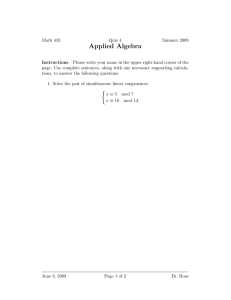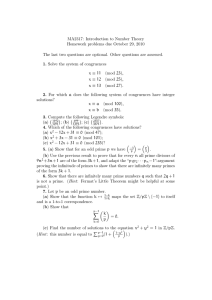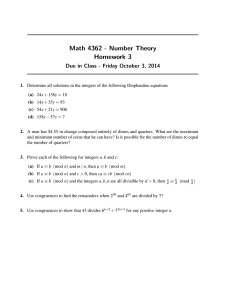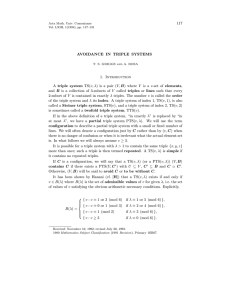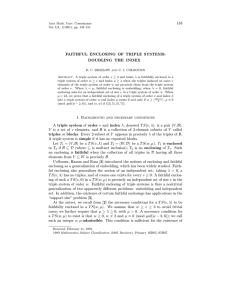MEI Casio Tasks Introduction to Programming for Number Theory Task A
advertisement
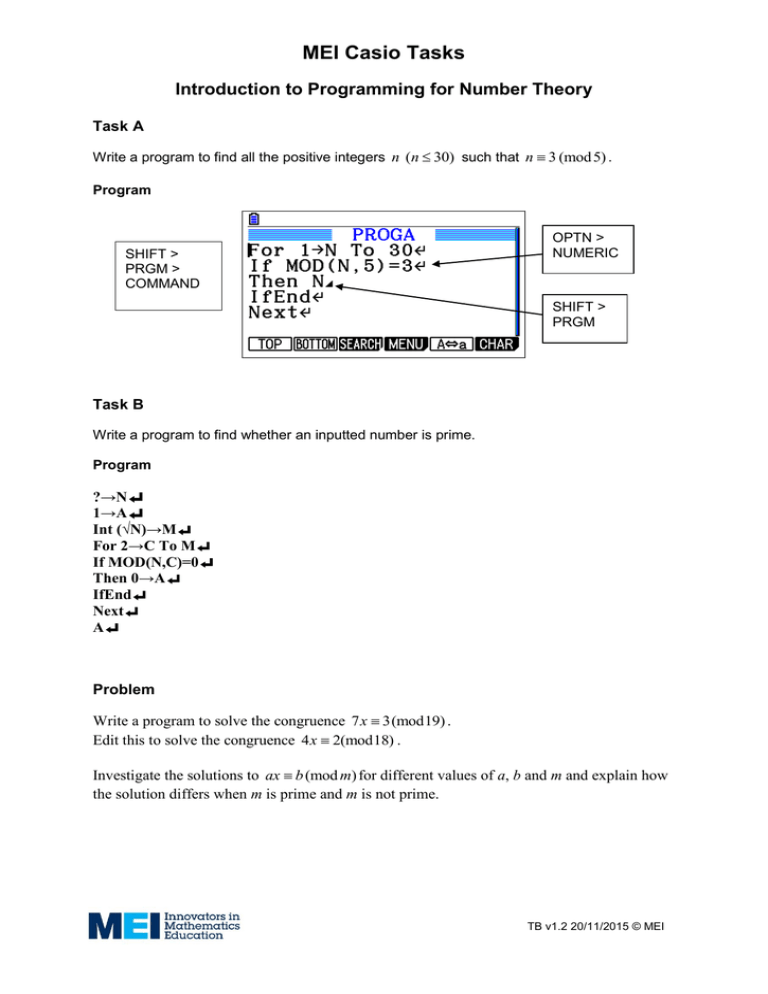
MEI Casio Tasks Introduction to Programming for Number Theory Task A Write a program to find all the positive integers n (n 30) such that n 3 (mod 5) . Program SHIFT > PRGM > COMMAND OPTN > NUMERIC SHIFT > PRGM Task B Write a program to find whether an inputted number is prime. Program ?→Nl 1→Al Int (√N)→Ml For 2→C To Ml If MOD(N,C)=0l Then 0→Al IfEndl Nextl Al Problem Write a program to solve the congruence 7 x 3(mod19) . Edit this to solve the congruence 4 x 2(mod18) . Investigate the solutions to ax b (mod m) for different values of a, b and m and explain how the solution differs when m is prime and m is not prime. TB v1.2 20/11/2015 © MEI MEI Casio Tasks Investigation Investigate the simultaneous congruences ax by c (mod p ) with 0 x p,0 y p . dx ey f (mod p ) Suggested programs: Find the positive integer solutions to 3 x 5 y 7(mod17) with 0 x 17,0 y 17 . Find the positive integer solutions, x and y, to 3 x 5 y 7(mod17) . 2 x 7 y 1(mod17) Find the number of solutions, x and y, to the simultaneous congruences 7 x y 6 (mod 17) x 5 y 13 (mod 17). Investigate the number of solutions, x and y, to the simultaneous congruences kx 5 y 7 (mod 17) 2 x 7 y 1 (mod 17) for different integer values of k where 0 k 17 . Examination question: MEI Further Pure with Technology – June 2014 3 This question concerns Pythagorean triples: positive integers a, b and c such that a 2 b2 c 2 . The integer n is defined by c b n . (i) Create a program that will find all such triples for a given value of n, where both a and b are less than or equal to a maximum value, m. You should write out your program in full. For the case n = 1, find all the triples with 1 a 100 and 1 b 100 . For the case n = 3, find all the triples with 1 a 200 and 1 b 200 . [9] (ii) For the case n = 1, prove that there is a triple for every odd value of a where a > 1. [4] (iii) For the case n = p, where p is prime, show that a must be a multiple of p. [3] (iv) For the case n = b, determine whether there are any triples. [4] (v) Edit your program from part (i) so that it will only find values of a and b where b is not a multiple of n. Indicate clearly all the changes to your program. Use the edited program to find all such triples for the case n = 2 with 1 a 100 and 1 b 100 . [4] TB v1.2 20/11/2015 © MEI



